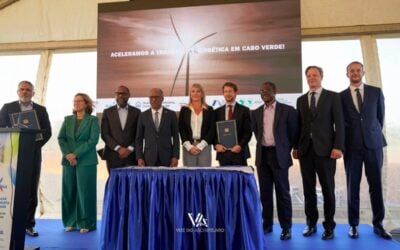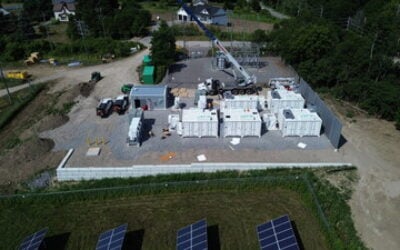Apricum partner Florian Mayr believes more third-party non-recourse project financing deals for energy storage could be coming in future. Image: Apricum – The Cleantech Advisory.
US-Canadian energy storage project developer Convergent Energy and Power has secured third-party project financing for 12MW of energy storage projects in Canada that will provide grid services.
Swiss investment advisory SUSI Partners, through its SUSI Energy Storage Fund I and capital investment group CJF Capital have financed the projects, which consist of a 5MW flywheel project and 7MW lithium-ion battery installation. The systems will provide fast-responding grid services in frequency regulation and voltage control.
The projects are in the Canadian province of Ontario and were awarded in a solicitation by the Ontario Independent Electricity System Operator (IESO), which aimed to provide around 50MW of energy storage for grid resiliency and flexibility. This was awarded in a lot of 33.5MW in 2014, including the Convergent Energy and Power projects, followed by a further award of 16.75MW in late 2015.
Earlier this year, Rob Harvey, chair of the Energy Storage Ontario (since rebranded as Energy Storage Canada) trade group, told Energy-Storage.News that under a remit of providing “clean, affordable and reliable” energy to its citizens, coupled with long-term planning, the province has seen renewables and energy storage begin to replace fossil fuels and nuclear capacity.
Try Premium for just $1
- Full premium access for the first month at only $1
- Converts to an annual rate after 30 days unless cancelled
- Cancel anytime during the trial period
Premium Benefits
- Expert industry analysis and interviews
- Digital access to PV Tech Power journal
- Exclusive event discounts
Or get the full Premium subscription right away
Or continue reading this article for free
Advisor Apricum talks up future potential of sector
Florian Mayr, director of cleantech advisory firm Apricum, which acted as an advisor and brought SUSI on board for the Convergent Energy and Power project financing deal, said Canada has started assessing the role of energy storage on the grid for five years. This began with the creation of the CAD50 million (US$37 million) Ontario Smart Grid Fund in 2011, followed up by the IESO’s awards.
Mayr said that the projects awarded in 2014 provide ancillary grid services, while the 16.75MW of 2015 projects will store energy when it is cheap and demand is low and put it back into the grid when demand is high.
“I think that these first programmes will help the stakeholders of the Canadian electricity market to realise the advantages of energy storage, with more opportunities emerging in the near future through tenders or bilateral contracts,” Mayr said.
SUSI’s involvement in the projects comes just after another Swiss company, SGEM, announced it will invest in a 20MW/10MWh frequency regulation storage project in the US. Florian Mayr said SUSI has set up a EUR250 million (US$278 million) fund for microgrid, ancillary services and load levelling purposes in OECD countries, making it an obvious fit for the 12MW Convergent Energy and Power projects.
“SUSI Partners has clearly realized the high potential of the energy storage market for its institutional investors seeking attractive risk-adjusted returns in a rapidly growing infrastructure asset class that also contributes to the mitigation of climate change,” Mayr said.
Convergent Energy and Power, which claims to have 55MW/200MWh of energy storage projects operating, under construction or contracted to be built, pointed out in a press release that the 12MW Ontario flywheel and battery projects are being built under a non-recourse, third-party project financing structure, rather than coming from balance sheet financing, which Apricum also said was unusual in the energy storage sector to date.
Apricum’s Florian Mayr said however that he believed such investments could become more commonplace.
“Project opportunities are increasingly arising via public tenders or by proactively approaching potential customers. Typically, investments in energy storage imply a longer timeframe and contractual guarantees allowing for relatively safe future revenue streams, as is the case for most infrastructure projects. Since major international players such as Siemens and GE are already active in the industry, technological risks may be covered to a large extent by warranty agreements with reliable and financially strong partners.”
Mayr added that due to the complexity of the propositions involved and the relatively early stage of the energy storage industry’s maturity, there are opportunities to be had by “players with a deep understanding” of the technologies and their uses. He said that even compared to renewable energy projects, energy storage can create “significantly more attractive risk/reward ratios”.
Read Florian Mayr of Apricum’s Energy-Storage.News guest blog “How to determine meaningful, comparable costs of energy storage”, from earlier this year.





